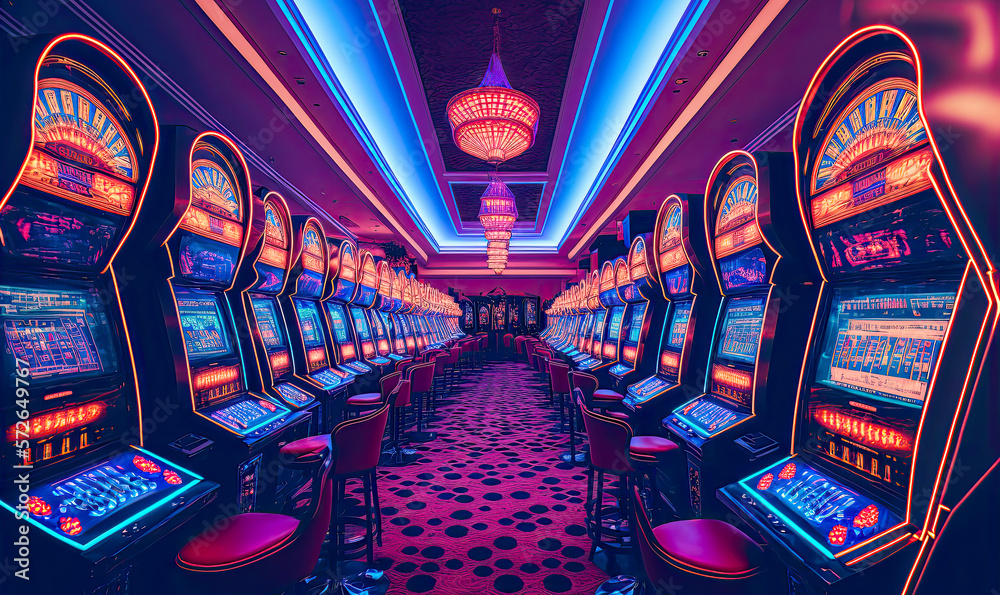
Casino games have long captivated the human imagination, drawing gamblers into a realm filled with luck, planning, and the allure of thrill. Each game is meticulously crafted not just for entertainment, but also to inspire targeted emotional responses that keep participants involved and committed. Understanding the drives behind these designs reveals much about how psychology plays a vital role in the gaming experience.
From the bright lights and vibrant sounds to the intricate layering of guidelines and payoffs, casino games are designed to create an atmosphere of excitement and anticipation. Game designers leverage psychological principles to influence player behavior, whether through the use of jackpots, almost wins, or social interactivity. By examining these factors, we can better appreciate how casino games fulfill not just a need for entertainment, but underlying psychological needs for excitement and risk.
Comprehending Gamer Behavior
Casino games are crafted with a profound comprehension of player psyche, which is crucial for luring and keeping players. The thrill of the game, alongside the hope of winning, establishes a strong draw. Game designers employ elements like sound effects, dynamic graphics, and immersive gameplay to seize attention and evoke emotional responses. These sensory experiences enhance the overall experience, making players feel more involved in the game.
Another significant aspect of player behavior is the concept of risk versus reward. Casino games often weigh risky situations with the potential for considerable rewards, which can cause the event known as near-miss phenomenon. When players come near to winning, the brain secretes dopamine, bolstering their behavior and motivating them to persist playing in quest of that elusive win. This cycle of hope and letdown plays a key role in how games are designed and promoted.
Lastly, social factors also play a critical role in player behavior at casinos. Many games are designed to be played in teams or in company with other players, fostering a sense of community and collective experience. The community engagement inherent in games like poker enhances enjoyment and can culminate in extended gameplay. Designers leverage on this by creating environments that prompt players to stay, connect, and return, making the overall casino experience more inviting.
The Role of Imagery and Audio
Visuals and audio play a significant role in improving the gambler’s experience within gambling games. Designers utilize vibrant colors, eye-catching graphics, and engaging animations to attract players’ attention and maintain their focus. The use of motifs, such as adventure or opulence, helps create an engaging atmosphere that transports players into another world. By connecting to the senses, these elements contribute to a heightened emotional response, encouraging players to interact more profoundly with the games.
Audio design is just as important in reinforcing the overall experience of casino games. The combination of ambient music, audio effects for successful combinations, and ambient noises creates an auditory landscape that keeps players enthralled. Audio cues associated with victories, such as chiming bells or celebratory music, evoke feelings of excitement and satisfaction, prompting players to continue playing. These audio cues are carefully placed to amplify the thrill of the game and create a more engaging experience.
Moreover, the synchronization of imagery and audio is important for supporting the game’s overall theme and mood. Each element should align harmoniously to create a cohesive experience that pulls players in. The effective use of this synergy not only improves user satisfaction but also increases the chances of return play, as players become more engaged in the immersive world that the gambling games offer. five 88 This thoughtful integration of imagery and audio ultimately enhances player engagement and commitment.
Incentive Systems and Participation
The creation of casino experiences significantly relies on reward structures to keep players involved and coming back for additional experiences. These structures are rooted in behavioral theories that exploit human nature and desire. Players are often motivated by the excitement of success, which is supported by instant responses through the game structure’s design. This instant gratification not only enhances the gaming experience but also fosters a feeling of achievement, prompting participants to continue playing in hopes of greater rewards.
Gaming establishments adopt various incentive systems, such as jackpots, extra rewards, and increased rewards, to captivate players. These features create a layer of excitement that sustains interest. Additionally, the randomness of results plays a significant role in sustaining interest. The variable reward system, where successes are random but happen often enough, maintains participants on edge and motivated to keep playing. This cycle of anticipation and expectation is essential to the effectiveness of gambling experiences.
In addition, social elements, such as competitive events and collaborative options, enhance the engagement factor by tapping into the competitive nature of players. The communal aspect of playing with fellow participants can intensify the excitement of success and create a community atmosphere within the gaming space. By combining these community elements with efficient incentive structures, gambling experiences don’t just offer fun but also nurture a deeper connection among participants, solidifying their commitment to the overall experience.
